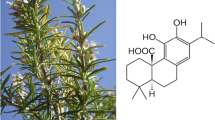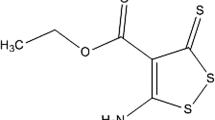Abstract
Oxidative/nitrosative stress plays a crucial role in Parkinson’s disease (PD) by triggering mitochondrial dysfunction. Nitrosative stress is mediated by reactive species such as peroxynitrite (PN) which could damage biomolecules thereby impinging on the cellular machinery. We observed that PN (0–1000 μM) inhibited brain mitochondrial complex I (CI) activity in a dose-dependent manner with concomitant tyrosine nitration of proteins. We also observed that exposure to PN at low concentrations (62.5–125 μM) significantly decreased the mitochondrial membrane potential and affected the mitochondrial integrity at higher doses (500–750 μM) as indicated by the mitochondrial swelling experiment. Therefore, it could be surmised that compounds that prevent such mitochondrial damage might have therapeutic value in neurological conditions such as PD. We previously showed that curcumin could detoxify PN and protect against CI inhibition and protein nitration. However, the therapeutic potential of curcumin is constrained by limited bioavailability. To address this issue and obtain improved antioxidants, three bioconjugates of curcumin (Di-demethylenated piperoyl, di-valinoyl and di-glutamoyl esters) were generated and tested against PN-mediated nitrosative stress and mitochondrial damage. We found that among the bioconjugates, the glutamoyl diester of curcumin showed improved protection against PN-dependent CI inhibition and protein nitration compared to other conjugates. Di-glutamoyl curcumin protected dopaminergic neurons against 1-methyl-4-phenylpyridinium (MPP+)-mediated neuronal death. These effects were improved compared to curcumin alone suggesting that di-glutamoyl curcumin could be a better neuroprotective agent in neurodegenerative diseases such as PD.




Similar content being viewed by others
Abbreviations
- PD:
-
Parkinson’s disease
- SN:
-
Substantia nigra
- NO:
-
Nitric oxide
- PN:
-
Peroxynitrite
- CI:
-
Mitochondrial complex I
- 3-NT:
-
3-nitrotyrosine
- RNS:
-
Reactive nitrogen species
- GSH:
-
Glutathione
- PTP:
-
Permeability transition pore
- ∆Ψm :
-
Mitochondrial membrane potential
- JC-1:
-
5,5′,6,6′-Tetrachloro-1,1′3,3′-tetra ethyl benzimidazolyl carbocyanine iodide
- D1:
-
Di-demethylenated piperoyl curcumin
- D2:
-
Di-valinoyl curcumin
- D3:
-
Di-glutamoyl curcumin
References
Diaz NL, Waters CH (2009) Current strategies in the treatment of Parkinson’s disease and a personalized approach to management. Expert Rev Neurother 9:1781–1789
Adams JD Jr, Chang ML, Klaidman L (2001) Parkinson’s disease—redox mechanisms. Curr Med Chem 8:809–814
Beal MF (1996) Mitochondria, free radicals, and neurodegeneration. Curr Opin Neurobiol 6:661–666
Nohl H, Jordan W, Hegner D (1981) Identification of free hydroxyl radicals in respiring rat heart mitochondria by spin trapping with the nitrone DMPO. FEBS Lett 123:241–244
Turrens JF, Alexandre A, Lehninger AL (1985) Ubisemiquinone is the electron donor for superoxide formation by complex III of heart mitochondria. Arch Biochem Biophys 237:408–414
Gokulrangan G, Zaidi A, Michaelis ML, Schoneich C (2007) Proteomic analysis of protein nitration in rat cerebellum: effect of biological aging. J Neurochem 100:1494–1504
Danielson SR, Andersen JK (2008) Oxidative and nitrative protein modifications in Parkinson’s disease. Free Radic Biol Med 44:1787–1794
Smith MA, Richey Harris PL, Sayre LM, Beckman JS, Perry G (1997) Widespread peroxynitrite-mediated damage in Alzheimer’s disease. J Neurosci 17:2653–2657
Clementi E, Brown GC, Feelisch M, Moncada S (1998) Persistent inhibition of cell respiration by nitric oxide: crucial role of S-nitrosylation of mitochondrial complex I and protective action of glutathione. Proc Natl Acad Sci USA 95:7631–7636
Murray J, Taylor SW, Zhang B, Ghosh SS, Capaldi RA (2003) Oxidative damage to mitochondrial complex I due to peroxynitrite: identification of reactive tyrosines by mass spectrometry. J Biol Chem 278:37223–37230
Mythri RB, Jagatha B, Pradhan N, Andersen J, Bharath MM (2007) Mitochondrial complex I inhibition in Parkinson’s disease: how can curcumin protect mitochondria? Antioxid Redox Signal 9:399–408
Aggarwal BB, Sundaram C, Malani N, Ichikawa H (2007) Curcumin: the Indian solid gold. Adv Exp Med Biol 595:1–75
Aggarwal BB, Kumar A, Bharti AC (2003) Anticancer potential of curcumin: preclinical and clinical studies. Anticancer Res 23:363–398
Lim GP, Chu T, Yang F, Beech W, Frautschy SA, Cole GM (2001) The curry spice curcumin reduces oxidative damage and amyloid pathology in an Alzheimer transgenic mouse. J Neurosci 21:8370–8377
Thiyagarajan M, Sharma SS (2004) Neuroprotective effect of curcumin in middle cerebral artery occlusion induced focal cerebral ischemia in rats. Life Sci 74:969–985
Jagatha B, Mythri RB, Vali S, Bharath MM (2008) Curcumin treatment alleviates the effects of glutathione depletion in vitro and in vivo: therapeutic implications for Parkinson’s disease explained via in silico studies. Free Radic Biol Med 44:907–917
Anand P, Kunnumakkara AB, Newman RA, Aggarwal BB (2007) Bioavailability of curcumin: problems and promises. Mol Pharm 4:807–818
Dubey SK, Sharma AK, Narain U, Misra K, Pati U (2008) Design, synthesis and characterization of some bioactive conjugates of curcumin with glycine, glutamic acid, valine and demethylenated piperic acid and study of their antimicrobial and antiproliferative properties. Eur J Med Chem 43:1837–1846
Harish G, Venkateshappa C, Mythri RB, Dubey SK, Mishra K, Singh N, Vali S, Bharath MM (2010) Bioconjugates of curcumin display improved protection against glutathione depletion mediated oxidative stress in a dopaminergic neuronal cell line: implications for Parkinson’s disease. Bioorg Med Chem 18:2631–2638
Chinopoulos C, Tretter L, Adam-Vizi V (1999) Depolarization of in situ mitochondria due to hydrogen peroxide-induced oxidative stress in nerve terminals: inhibition of alpha-ketoglutarate dehydrogenase. J Neurochem 73:220–228
Shimizu S, Eguchi Y, Kamiike W, Funahashi Y, Mignon A, Lacronique V, Matsuda H, Tsujimoto Y (1998) Bcl-2 prevents apoptotic mitochondrial dysfunction by regulating proton flux. Proc Natl Acad Sci USA 95:1455–1459
Rustin P, Chretien D, Bourgeron T, Gerard B, Rotig A, Saudubray JM, Munnich A (1994) Biochemical and molecular investigations in respiratory chain deficiencies. Clin Chim Acta 228:35–51
Rigobello MP, Folda A, Scutari G, Bindoli A (2005) The modulation of thiol redox state affects the production and metabolism of hydrogen peroxide by heart mitochondria. Arch Biochem Biophys 441:112–122
Vali S, Mythri RB, Jagatha B, Padiadpu J, Ramanujan KS, Andersen JK, Gorin F, Bharath MM (2007) Integrating glutathione metabolism and mitochondrial dysfunction with implications for Parkinson’s disease: a dynamic model. Neuroscience 149:917–930
Reers M, Smith TW, Chen LB (1991) J-aggregate formation of a carbocyanine as a quantitative fluorescent indicator of membrane potential. Biochemistry 30:4480–4486
Iwunze MO, McEwan D (2004) Peroxynitrite interaction with curcumin solubilized in ethanolic solution. Cell Mol Biol (Noisy-le-grand) 50:749–752
Koeck T, Fu X, Hazen SL, Crabb JW, Stuehr DJ, Aulak KS (2004) Rapid and selective oxygen-regulated protein tyrosine denitration and nitration in mitochondria. J Biol Chem 279:27257–27262
Sacksteder CA, Qian WJ, Knyushko TV, Wang H, Chin MH, Lacan G, Melega WP, Camp DG II, Smith RD, Smith DJ, Squier TC, Bigelow DJ (2006) Endogenously nitrated proteins in mouse brain: links to neurodegenerative disease. Biochemistry 45:8009–8022
Chandana R, Mythri RB, Mahadevan A, Shankar SK, Srinivas Bharath MM (2009) Biochemical analysis of protein stability in human brain collected at different post-mortem intervals. Indian J Med Res 129:189–199
Olas B, Nowak P, Wachowicz B (2004) Resveratrol protects against peroxynitrite-induced thiol oxidation in blood platelets. Cell Mol Biol Lett 9:577–587
Schapira AH, Cooper JM, Dexter D, Clark JB, Jenner P, Marsden CD (1990) Mitochondrial complex I deficiency in Parkinson’s disease. J Neurochem 54:823–827
Shoba G, Joy D, Joseph T, Majeed M, Rajendran R, Srinivas PS (1998) Influence of piperine on the pharmacokinetics of curcumin in animals and human volunteers. Planta Med 64:353–356
Sinko PJ, Balimane PV (1998) Carrier-mediated intestinal absorption of valacyclovir, the L-valyl ester prodrug of acyclovir: 1. Interactions with peptides, organic anions and organic cations in rats. Biopharm Drug Dispos 19:209–217
Acknowledgments
This study was supported by a fast-track grant to M.M.S.B. from the Department of Science and Technology, India. RBM is a senior research fellow of Council for Scientific and Industrial Research, India. GH is a junior research fellow of Indian Council for Medical Research, India.
Author information
Authors and Affiliations
Corresponding author
Rights and permissions
About this article
Cite this article
Mythri, R.B., Harish, G., Dubey, S.K. et al. Glutamoyl diester of the dietary polyphenol curcumin offers improved protection against peroxynitrite-mediated nitrosative stress and damage of brain mitochondria in vitro: implications for Parkinson’s disease. Mol Cell Biochem 347, 135–143 (2011). https://doi.org/10.1007/s11010-010-0621-4
Received:
Accepted:
Published:
Issue Date:
DOI: https://doi.org/10.1007/s11010-010-0621-4




